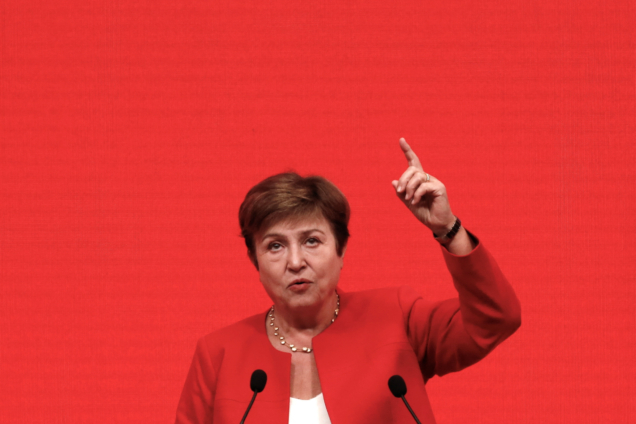Global growth is projected to be in line with the April 2024 World Economic Outlook (WEO) forecast, at 3.2% in 2024 and 3.3% in 2025.
According to the International Monetary Fund, global activity and world trade firmed up at the turn of the year, with trade spurred by strong exports from Asia, particularly in the technology sector.
Relative to the April 2024 WEO, first quarter growth surprised on the upside in many countries, although downside surprises in Japan and the United States were notable.
In the United States, after a sustained period of strong outperformance, a sharper-than-expected slowdown in growth reflected moderating consumption and a negative contribution from net trade. In Japan, the negative growth surprise stemmed from temporary supply disruptions linked to the shutdown of a major automobile plant in the first quarter.
In contrast, the WEO said shoots of economic recovery materialised in Europe, led by an improvement in services activity.
In China, resurgent domestic consumption propelled the positive upside in the first quarter, aided by what looked to be a temporary surge in exports belatedly reconnecting with last year’s rise in global demand. These developments have narrowed the output divergences somewhat across economies, as cyclical factors wane and activity becomes better aligned with its potential.
Global disinflation slowing
However, varied momentum in activity at the turn of the year has somewhat narrowed the output divergence across economies as cyclical factors wane and activity becomes better aligned with its potential.
According to the IMF, services price inflation is holding up progress on disinflation, which is complicating monetary policy normalisation.
“Upside risks to inflation have thus increased, raising the prospect of higher-for-even-longer interest rates, in the context of escalating trade tensions and increased policy uncertainty”, it pointed out.
To manage these risks and preserve growth, it said the policy mix should be sequenced carefully to achieve price stability and replenish diminished buffers.
Meanwhile, the momentum on global disinflation is slowing, signaling bumps along the path.
This reflects different sectoral dynamics: the persistence of higher-than-average inflation in services prices, tempered to some extent by stronger disinflation in the prices of goods.
Nominal wage growth remains brisk, above price inflation in some countries, partly reflecting the outcome of wage negotiations earlier this year and short-term inflation expectations that remain above target.
Latest Stories
-
Center for Learning and Childhood Development Director Dr Kwame Sakyi honoured at Ghana Philanthropy Awards
7 hours -
Asantehene receives 28 looted artefacts
8 hours -
CAF WCL 2024: Ghana’s Thelma Baffour wins title with TP Mazembe
9 hours -
Benjamin Boakye slams politicisation of energy sector issues and ECG’s inefficiencies
9 hours -
Erastus Asare Donkor and Dr Neta Parsram win big at 10th Mining Industry Awards
9 hours -
Government is “suppressing information” about power sector challenges – IES Director
9 hours -
Majority of our debts caused by forex shortfall – ECG Boss
10 hours -
Pan-African Savings and Loans supports Ghana Blind Union with boreholes
10 hours -
Bole-Bamboi MP Yussif Sulemana donates to artisans and Bole SHS
10 hours -
Top up your credit to avoid potential disruption – ECG to Nuri meter customers
10 hours -
Dutch & Co wins 2024 Entrepreneur of the Year Award
11 hours -
We’ll cut down imports and boost consumption of local rice and other products – Mahama
13 hours -
Prof Opoku-Agyemang donates to Tamale orphanage to mark her birthday
14 hours -
Don’t call re-painted old schools brand new infrastructure – Prof Opoku-Agyemang tells gov’t
15 hours -
Sunon Asogli plant will be back on stream in a few weeks – ECG
15 hours

